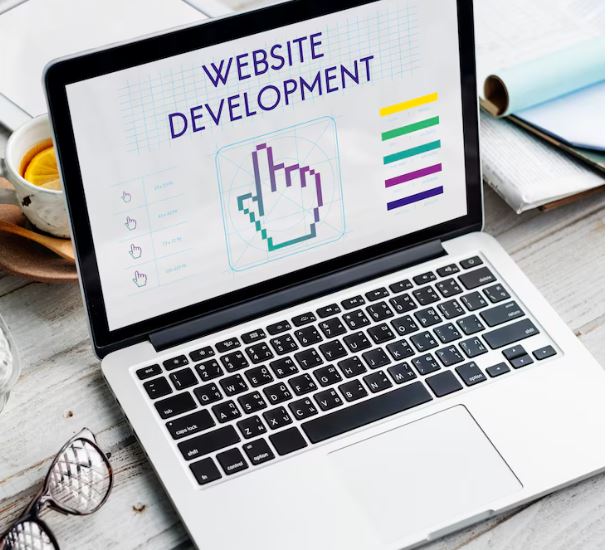A good web design Sydney is the result of a combination of several key elements that work together to create an effective and pleasant user experience. Here are the primary factors:
1. User-Centered Design
User Experience (UX): Prioritize the user’s needs and behaviors. Make navigation intuitive, and ensure that information is easy to find.
Accessibility: Ensure the website is usable by people with disabilities by adhering to web accessibility standards.
2. Visual Design
Consistency: Maintain a consistent style, including fonts, colors, and layout, throughout the site to create a cohesive experience.
Visual Hierarchy: Use size, color, and spacing to guide users’ attention to the most important elements first.
White Space: Allow for plenty of white space to avoid clutter and improve readability.
3. Content
Quality Content: Provide valuable, relevant, and well-written content that meets the needs of your audience.
Readability: Use clear and concise language, appropriate font sizes, and sufficient contrast between text and background.
4. Functionality
Responsiv webbdesign: Ensure the website looks and works well on all devices, from desktops to smartphones.
Speed: Optimize for fast loading times, as slow websites can frustrate users and lead to higher bounce rates.
Interactivity: Incorporate interactive elements such as forms, buttons, and other user interfaces that work smoothly.
5. Technical Aspects
SEO (Search Engine Optimization): Optimize for search engines to increase visibility and attract more visitors.
Compatibility: Ensure the website functions correctly across different browsers and devices.
6. Branding
Brand Identity: Reflect the brand’s personality and values through the design elements, creating a memorable experience.
Logo and Imagery: Use high-quality images and a well-designed logo to reinforce brand identity.
7. Feedback and Testing
Usability Testing: Conduct regular testing with real users to identify and fix any usability issues.
Analytics: Use analytics tools to track user behavior and make data-driven improvements.
By focusing on these elements, you can create a website that is not only aesthetically pleasing but also functional, user-friendly, and effective in achieving its goals.
What is the difference between website design and website development?
Website design and website development are two distinct but closely related disciplines that work together to create a fully functional and visually appealing website. Here are the main differences:
Webbdesign
Website design Sydney focuses on the aesthetic and usability aspects of a website. It is primarily concerned with how the website looks and how users interact with it.
Key Elements of Website Design:
Visual Design:
Layout: The arrangement of elements on a webpage.
Color Scheme: The combination of colors used throughout the site.
Typography: The choice of fonts and text styling.
Imagery: The use of photos, graphics, and icons.
User Experience (UX) Design:
Navigation: Designing menus, links, and other navigational elements to be intuitive and user-friendly.
Interactivity: Ensuring that interactive elements like buttons and forms are easy to use.
Wireframes and Prototypes: Creating preliminary sketches and models of the website to plan the structure and flow.
Branding:
Brand Identity: Incorporating the brand’s logo, colors, and style to ensure consistency with the overall brand.
Webbutveckling
Website development is focused on the technical aspects of building a website. It involves writing the code that makes the design come to life and ensures the website functions correctly.
Key Elements of Website Development:
Front-End Development:
HTML/CSS: Markup and styling languages used to create the structure and appearance of the website.
JavaScript: Programming language used to create interactive elements and enhance user experience.
Back-End Development:
Server-Side Languages: Such as PHP, Python, Ruby, and Node.js, used to handle server logic, database interactions, and user authentication.
Databases: Systems like MySQL, PostgreSQL, and MongoDB used to store and manage data.
Full-Stack Development:
Combining Front-End and Back-End: Full-stack developers handle both front-end and back-end tasks, ensuring seamless integration between the design and functionality.
Content Management Systems (CMS):
Platforms like WordPress, Joomla, and Drupal: Allowing for easier content creation and management without extensive coding knowledge.
Collaboration Between Designers and Developers
Design Handoffs: Designers create detailed mockups and prototypes which are then handed off to developers to be built.
Feedback Loop: Developers provide feedback on the feasibility of designs, and designers may adjust based on technical constraints or opportunities.
Iterative Process: Both designers and developers work together iteratively to refine and perfect the website.
In Summary
Webbdesign focuses on the look, feel, and user experience of a site.
Website Development focuses on the technical implementation and functionality.
Both disciplines are essential for creating a successful website, with designers ensuring it is visually appealing and easy to use, and developers ensuring it works smoothly and efficiently.
FAQ’s
Why Does Web Design Cost So Much?
Web design often comes with a significant cost due to several factors. First, it requires specialized skills in graphic design, user experience (UX) design, and sometimes animation or illustration, which demand expertise and creativity. Second, designing a website involves thorough planning to ensure it meets both aesthetic and functional goals, requiring time for research, wireframing, and prototyping. Additionally, custom web designs tailored to a client’s brand identity and specific requirements contribute to the cost, as does the need for responsive design that works seamlessly across various devices. Moreover, web designers often provide ongoing support and maintenance post-launch, ensuring the site remains secure and up-to-date. Overall, the investment in professional web design reflects the complexity, creativity, and technical proficiency required to create a high-quality, effective website.
What is website development?
Website development is the process of creating and maintaining websites by building the technical foundation that allows them to function. It involves a range of tasks including writing code, creating databases, and implementing features that allow for user interaction. Website development is typically divided into front-end development, which focuses on the parts of the website that users interact with (using languages like HTML, CSS, and JavaScript), and back-end development, which involves server-side operations, database management, and application logic (using languages like PHP, Python, Ruby, and Node.js). This process ensures that a website is not only visually appealing and user-friendly but also functional, secure, and optimized for performance.

